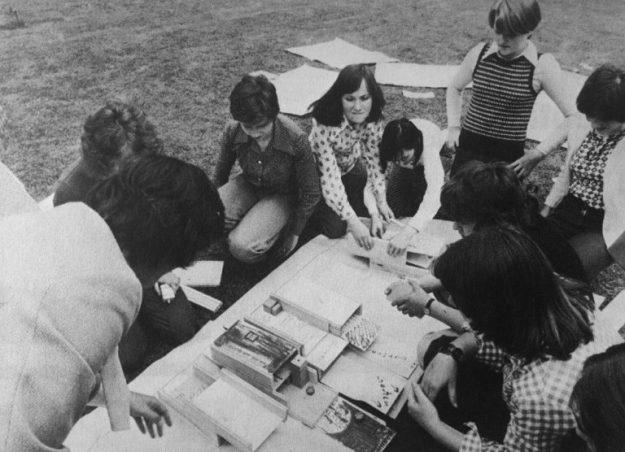A complete archive of theses discussed from DASP students and former DAPE & DSAU Ph.D. programmes is available on the official site link →
Current theses:
Miriam Bodino / The pursuit of inclusion and spatial justice in unequal contemporary cities. Learning from Cape Town desegregation
✕ close
Miriam Bodino
The pursuit of inclusion and spatial justice in unequal contemporary cities. Learning from Cape Town desegregation
Tutor: Prof. Paolo Mellano
Interest
The research focus is about unequal cities and spatial justice in contemporary cities.
The South African Gini coefficient represents the economical evidence of inequality.
Cape Town is exemplifying because of the segregated pattern inherited by the apartheid planning.
Research questions
What is the role of architecture and urban planning in the desegregation process?
If the apartheid city was planned to be segregated (racially, but also socially, culturally and economically), can architecture and urban planning play a role in the process of desegregation? Desegregation is not just intended as the co-existence of different races but as integration of the inhabitants into the urban life.
If public spaces are defined as the social, cultural economical and political infrastructure of the city, their role is crucial in this process – especially in poor urban areas where the private resources are little by definition.
Since 1999 the conceptual approach of the Spatial Development Framework (MUNI SDF) has been to achieve equity and integration through the distribution of an equitable interchange hierarchy – and “people’s places” connected to those. The ongoing process is struggling facing realities.
But what has been achieved? Is it possible to evaluate the “influence/impact radius” of a specific public space intervention?
Thesis objective
The objective of the thesis is to analyse and observe a project that has been planned and structured mainly to reduce criminality in a township area, but at the same it has enhanced the neighbourhood providing a so called public space. It is not a single public building, but it a collection of public and private spaces (schools, library, square, park, sport centre, live-work unit, café, link with existing train station…). Being a linear structure it provides connectivity within the neighbourhood and being quite recent people may compare the space before and after the intervention.
The lens through which to observe the public space is the concept of the spatial justice, inclusiveness and the right to the city.

Federica Bonavero / Retrofitting cities, making places. Codes and labels for building energy efficiency
✕ close
Federica Bonavero
Retrofitting cities, making places. Codes and labels for building energy efficiency
Tutors: Prof. Luca Caneparo, Prof. Johan Verbeke (Katholieke Universiteit Leuven)
This doctoral research project aim is to develop a design-oriented investigation into the opportunities and barriers for urban retrofit.
By looking at building energy codes and certificates/labels, the research investigates the regulatory provisions that have been adopted in different EU Member States to affect the decision environment and the behaviors of market actors towards the implementation of a number of retrofit interventions. Within the framework of the Incubators of Public Spaces, a funded JPI Urban Europe project aiming at the development of a co-creative platform for the self-organization of places, it collects and maps typologies of retrofit interventions, focusing on their most physical and architectural aspects.
Though little discussed, building energy-efficiency measures often go beyond technological solutions to affect the urban space morphology. Cladding systems, sunspaces, green roofs and walls, rooftop elevations and side extensions, etc. can not only contribute to energy and carbon savings but also encompass building renovation and urban regeneration actions.
Through the adoption of a comparative method, the research fills a gap in the existing literature, exploring local pathways to mainstream urban retrofitting policies into planning tools.

Edoardo Bruno / Reaching the sea: peri-urban transformation in Guangzhou between planning visions and local negotiations
✕ close
Edoardo Bruno
Reaching the sea: peri-urban transformation in Guangzhou between planning visions and local negotiations
Tutors: Prof. Michele Bonino, Prof. Francesca Frassoldati
The Chinese city of Guangzhou has experienced in the last thirty years a tremendous urban expansion, affecting not only its morphological dimension but also its urban policies. The city has followed the same destiny of other areas of Guangdong Province, selected at the end of the Seventies as a test ground towards capitalism, where global economic forces have generated what is better known as the Pear River Delta Metropolis, the largest conurbation in the world according to the data provided by World Bank in 2015.
But despite these macro aspects, since 2000 the municipality has promoted a new strategical approach for its urban planning objectives, investing all its territory and truly affecting its development. In this renovated urban control, where the city tries implementation logics over urbanized areas through institutional, bureaucracy and planning mechanisms, the negotiations at local scale over renovation projects become crucial to understand the first step to new planning methodologies. The volunteer is to generate transformation where a public consensus and successful operation doesn’t pass only through formal aspects but also through a controlled and planned processes of negotiation.
The research’s goal is to verify how and were the macro scale planning system clashes at the local determination of a contemporary Chinese city. The objective is to demonstrate how the process between different level of stakeholders or how a different urban topic observing on the fieldwork, could truly affect the destiny of the functional grid planned by the municipality offices.
This study has selected three case studies disposed along a precise axis of expansion inside the main purposes of the Strategical Plan of Guangzhou 2000-2010 and renovated in the new version that look at the 2020 deadline.
The South expansion of Guangzhou city is the remaining axis along which promoting real estate and infrastructure investments, crucial aspect to maintain the municipal financial stability, in an topography that reports the scarcity of the land availability.
Starting from the 2010 inaugurated CBD of Guangzhou called Zhuijiang New Town and moving to the extreme southern point of the municipality located in Nansha District, the research has selected three sites invested by important urban projects. The extension of the monumental axis of the Zhuijiang New Town towards the Southern District of Haizhu, will influence the existence of the T.I.T. Creative Industry, a successful renovation of a former brownfield promoted in 2010 that could be completed demolished thanks to the creation of an important cultural cluster of three museums. Moving along the future axis the study has encountered the case study of the transformation of Lijiao Village, the biggest in Guangzhou, into a modern residential and commercial area. The location involves the literature about the “villages in the city”, an important topic in contemporary China where it is possible to collect all the main consequences of the rapid Chinese urbanization and starting multi-scalar and multidisciplinary analyses.
The last case study is located at the geographical terminus of the whole municipality, otherwise the Nansha New Town located in Nansha District. This represents the ideological and physical end of the strategical planning activities, that it is not yet fully started even considering many attempts from the mid-Nineties. The Nansha New Town tells this research how far neo-liberal approaches towards a fast urbanization can conduct, and also in which forms this slow transformation could affect institutions, local environment and planning visions.
In conclusion “reaching the sea” represents both a vision and a collection of physical actions with important consequences in the role that Guangzhou is seeking inside the Pearl River Delta Metropolis. The aim of the research is to analyse this continuous interrelation, where planning tools and strenuous local negotiations determine a complex decision making process.

Filippo Fiandanese / Transnational Urban Models in Tongzhou New City
✕ close
Filippo Fiandanese
Transnational Urban Models in Tongzhou New CityTransnational Urban Models in Tongzhou New City
Tutor: Prof. M. Bonino
The research aim is to investigate which urban design figures are employed in Chinese new towns developments in order to create a new centrality in a regional urban net, the Tonghzou town in the Beijing region has been elected as main field of enquiry.
The 2004-2020 Beijing Municipal Master-plan shifted the planning address from a mono-centered urban growth to a regional development conception. The plan, whose slogan is “Two Axes, Two Corridors, and Multiple Centers, established eleven new towns in the Beijing Municipality.
One of them is Tongzhou, placed at East of the Beijing inner city where the Chang’an Avenue (the East-West Beijing axis) extension crosses the Grand Canal.
Once an harbour centre on the Grand Canal, since the ‘50s Tongzhou turned in an industrial satellite town. When the Beijing CBD was realized in the near Chaoyangmen district and when several factories started to be re-localized, it turned into a commuter town. The 2004-2020 Beijing Master-plan assigned to Tongzhou financial and services functions, designated to be the CBD extension in the Greater Beijing. However urban transformation remained very slow until Central Government decided in 2015 to move there the Municipal Beijing Government. Thus, Tongzhou
achieved a capital role in the future layout in the Jing-Jin-Ji region, and now government, developers, urban planners and architects are focusing investments and projects in its development.
Starting from this important and on-going case study, the investigation goal is thus to identify the urban forms and their models in the construction of the Chinese new urban promise proposed in Chinese new towns. In particular, some recurring elements like river-fronts, axis, historical centres reconstructions and large infrastructures buildings like high speed train station, will be examined both in their physical and rhetoric forms to understand their role in shaping the new urbanization in China.
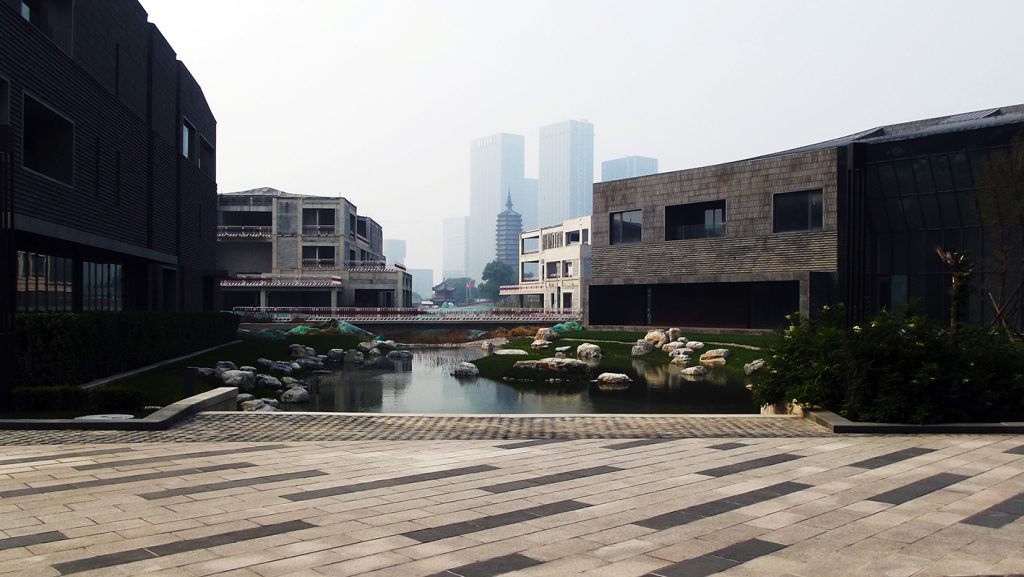
Asma Mehan / The Empty Locus of Power: Production of Political Urbanism in Modern Tehran
✕ close
Asma Mehan
The Empty Locus of Power: Production of Political Urbanism in Modern Tehran
tutors: Prof. Sergio Pace, Dr. Ali Mozaffari (Deakin University)
The Empty Locus of Power rereads city as peculiar urban forms and representations of political ideas. It positions itself around Claude Lefort’s theory of the empty place of power in creating democratic public spaces. For analyzing the relationship between socio-political dimensions of city and its urban projects, the case of modern Tehran have been investigated. The emergence of representative pseudo political public space for demonstration of power and national identity during the first Pahlavi era (1925-41), reoccupation of public spaces by social movements and political parties during the nationalization of Iranian oil movement till 1953 Iranian coup d’état and socio-political arrangement of ‘Metropolis of Tomorrow’ will be studied. The final part of research aims to theorize the necessity of urban social movements to approach democratic space in global context.

Caterina Montipò / Re-manufacturing the urban / re-balancing the urban - Urban manufacturing as a regenerative tool in post-industrial U.S. cities
✕ close
Caterina Montipò
Re-manufacturing the urban / re-balancing the urban
Urban manufacturing as a regenerative tool in post-industrial U.S. cities
tutor: Prof. Matteo Robiglio
This research focuses on the developing urban manufacturing ecosystem in U.S. cities. In the task of rethinking our cities, this research aims to understand if urban manufacturing can be included as a strategic tool able to address a more equitable economic growth in cities. Conceiving it as one more ecosystem able to thrive in cities, it can help the redistribution of spatial, social, and economic inequalities and unbalances.
In the transition to global markets, at the local level, cities still need backward material economies, defined as “urban manufacturing” by Saskia Sassen. According to Sassen, urban manufacturing is deeply networked in contracting and subcontracting chains, so it needs an urban context; it is customized, so it needs to be in proximity to customers and craft workers; it serves innovation and service economies, inverting the historical relation (Sassen 2009, “Cities Today: A New Frontier for Major Developments”, ANNALS AAPSS n.626).
Economic, social, and political discourses around new markets’ effect on cities have already underlined the key role of urban manufacturing as a path to recovering from the Great Recession (Nisha and Byron 2011, The Federal Role in Supporting Urban Manufacturing). However, decades of disregarding have contributed to the shrinkage of cities’ industrial land for other market-feasible uses and the displacement of low-profit enterprises to affordable and under-planned territories (Sassen 2009). Mission-driven, on-the-ground developers have played a key role in the urban manufacturing’s struggle to remain part of the city.
In recent years, many North-American cities and minor urban centers in metropolitan areas have started providing interesting translation in spatial term of the urban manufacturing ecosystem: land use recodifications, new subsidizing forms, and different type of incentives are (re)setting cities for manufacturing purpose. In some cases, planning for urban manufacturing has matched with the reuse of industrial legacy by re-facilitating under-used industrial buildings and former industrial district at risk of decay or gentrification.
The research aims to contribute to the more complex research framework focused on city and production. This debate represents a unique opportunity to take on some of the major challenges facing the 21st-century city: persistent unemployment, inequalities, isolation, resource depletion, and physical growth based on overtaxed and outdated 20th-century infrastructures (Marteen 2016, The Next Economy). Urban contexts need to be re-balanced in their contents and infrastructure through an adaptive design able to follow the open unfinished projects that cities represent –as objects, markets, and societies.
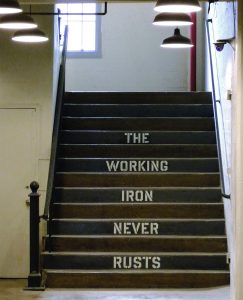
Elena Pressacco / Morphology and urban economics
✕ close
Elena Pressacco
“Morphology and urban economics”
tutors: Prof. Marco Trisciuoglio, Prof. Luigi Buzzacchi
The relationship between the economic sphere and architecture has a further relevance to the conditions we are experiencing. This issue has achieved, especially in recent years, a growing relevance first of all in urban economics studies, but rarely from a spatial point of view.
Indeed the aim, in this phase, is to look for causal connections between city analysis and Urban Economics decisions.
The research tries to understand, on one hand, how economic decisions influence the production of urban spaces and, on the other hand, how the urban morphology influences the store of an economic amount of the territory. Another important goal would be understand if the morphology of the city is able to influence the economics of the urban settlement. If many scholars have already demonstrated that economy it is able to influence the urban morphology and also the building form, it is not sure if this relation could be defined as circular or not.
The hypothesis is that the typo-morphological analysis can be a good instrument to understand the current cities shape.
One of the main goals of this work is trying to understand if urban morphology, nowadays defined as an analytic and static instrument, could be used, attached to other instruments as the economics one, as a design instrument.
A third point is to underline some of the casual connection between the two materials, using specific economic phenomena as an example.
The current Chinese economic and cultural settlement offers an interesting framework to observe this phenomenon for both urban investigation and consequent design. Firstly is summarising traditional urban design principles and how Chinese cities have transformed over time, it then introduces and offers a theoretic ground and scientific methodology for understanding the evolution of urban forms, initially developed in Western countries. It demonstrates the theoretic model via real cases – from the city of Nanjing – and establishes a direct link between understanding of urban forms and design development.
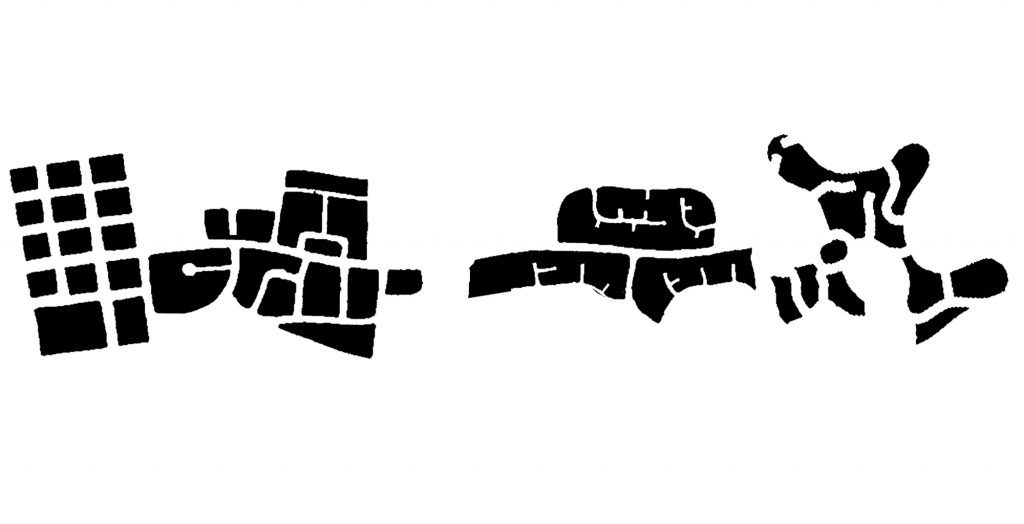
Davide Vero / Ageing is taking place. Urban ageing in Turin
✕ close
Davide Vero
Ageing is taking place. Urban ageing in Turin
Tutors: Prof. Filippo De Pieri, Prof. Alessandro Armando
Disruptive demographic trends show a world that is rapidly ageing. The goal of the research is to measure the possible fallout of the demographic phenomenon on the physical environment through multi-scale analysis -from the city to the house- and identifying the diachronic processes of adaptation and manipulation.
The socio-demographic transformation has been interpreted by the demographers in terms of two forms of crisis: a future crisis of dependency and a crisis of programming of architectural and urban settings, which were previously dominated by the young.
The work is placed in the wider and interdisciplinary field of the ageing studies.
In particular, the heterogeneous literature focuses on the clinical aspects of the Environmental Gerontology or on the indications for the age-friendly city, the paradigm of the World Health Organization, often overlooking the direct observation of the spaces and their transformation.
The research starts from this lack, reversing the perspective of cause and effect to find and highlight the key topics about urban ageing.
In order to place the research in a specific context and to reach the geographical dimension of the phenomenon, the data related to the ageing population collected from the city of Turin, ageing index and median age of population, are merged with the urban fabric. The ageing mapping is conducted at different scale, from the whole city scale to the scale of the block.
The work tests different methods in order to set tools and operational frames useful to stress and to question the topic of urban ageing, criticizing and falsifying the institutional guidelines-based approach.
Through the case study of Turin the works points out the dynamic process of adaptation and resilient practice. The analysis highlights not only the patterns emerged from the ageing mapping and the description of the area affected, but tries to grasp the physical transformation and the policies at stake.
Within an invisible crisis and in a context of little institutional awareness, the thesis offers the opportunity to rethink and to reconstruct a strategy that can face urban ageing in a longer time perspective.
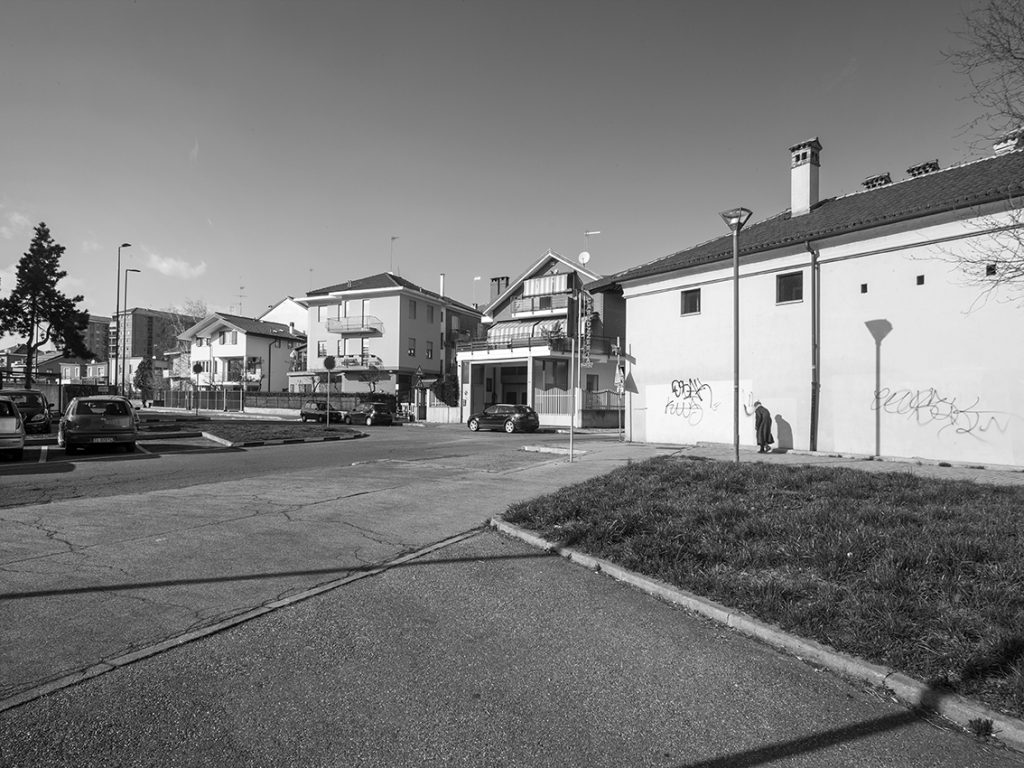
Photo: +65 © Beppe Giardino
Daniel Zwangsleitner / The Quest for Meaning – A Situational Analysis of the 'Modell Steiermark'
✕ close
Daniel Zwangsleitner
The Quest for Meaning – A Situational Analysis of the “Modell Steiermark”
Tutor: Prof. Antonio De Rossi
This research project will discuss the impacts of the politicization of architecture from the 1960s onwards and the reorientation or rather the shift of architect’s role during that period.
The so called “Modell Steiermark”, in force from the 1960s throughout the 1980s constitutes a crucial period for the the architectural development in Austria in the 20th century. On the basis of an interdisciplinary cooperation between architects and the public administration a (legal) framework was instated that very highly valued the importance of architecture and spatial-planning with the participation of the public. These efforts led to the creation of social housing projects that included aspects of sustainability and responsibility and integrated the future inhabitants in the process of planning and use. The involved architects thereby tried to redefine their traditional task and to reposition themselves in the field of architecture.
To fathom the underlying strategies and motivations as well as to depict the framework of the field of architecture I undertook a series of narrative interviews with the main actors of this period. These interviews, together with contemporary sources from the professional and lay media, archival material and not least the architectural projects itself will be analysed using Grounded Theory Methodology (Corbin & Strauss) and Situational Analysis (A. Clarke). This approach allows for analysing complex social worlds / arenas.
The architectural field is subject to a dense net of interdependencies that often remain hidden under the surface respectively are outshone by more obvious and representative strands of argumentation. With this approach I will shed light on a period that, while important for contemporary self-conception is not yet understood to the fullest.
